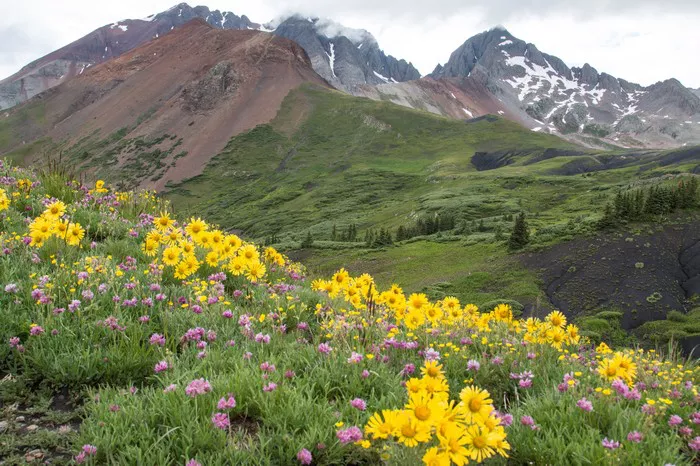California’s summer began with the sweet fragrance of flowers, but it’s set to end with the harsh smell of smoke.
After two rainy winters, California’s mountains and hillsides are lush with plant life—an alarming sign as the peak wildfire months approach. Soaring temperatures are drying out the greenery, turning it into potential fuel for wildfires. Excessive heat warnings are in effect across the state, with Sacramento expected to reach 112F (44C) on Wednesday.
Last year’s rains primarily benefited native vegetation after a long drought. However, a second consecutive year of abundant precipitation has also allowed invasive species to flourish.
“They are annual plants, they germinate, they grow, and then they die before summer,” said Denise Knapp, conservation and research director at the Santa Barbara Botanic Garden. “All that biomass – fine, dry fuel – is just ready to catch fire and spread fire.”
California has been in drought since the early 2000s and has been devastated by wildfires in recent years. These fires have caused hundreds of deaths, destroyed thousands of homes, and forced a major utility into bankruptcy after its equipment was blamed for starting a blaze. The fires are among the catastrophic extremes on every continent triggered by a rapidly changing climate.
In the past two years, California has received ample snow and rain during its wet season from October to April, ending years of drought and allowing plants to thrive. Last year, “superblooms” of native flowers covered the landscape. Although the colors weren’t as intense in 2024, there has been even more growth as invasive species start to catch up.
“We have had two excellent years of growth. This year was even better because of the way the precipitation came, which was more conducive to vegetation being able to absorb it and use it,” said Laurie Wayburn, co-founder of the Pacific Forest Trust, a non-profit conservation organization.
The growth of invasive plants is raising the threat of a severe wildfire season. Native grasses tend to handle the climate better and remain alive during the summer, while the invasive ones dry out and die, turning into fuel, Knapp said. These non-native plants crowd out native species and form a carpet, which turns into a bed of fire when they ignite.
Whether the vegetation leads to more wildfires depends on whether extreme heat is sustained enough to dry out California’s landscape. Already, scorching weather and gusty winds are raising the risk of fires heading into the July 4 holiday, prompting the state’s largest utility to warn it may have to shut off power lines.
Since January, 2,829 fires in California have burned 131,484 acres, according to the California Department of Forestry and Fire Protection (Cal Fire). This compares with an average of 3,152 fires and 27,160 acres in recent years. Daniel Swain, a climate scientist at the University of California, Los Angeles, said in June that while the fire season may start out slowly, the lull won’t last.
There will likely be “a rather rapid transition to above average wildfire activity across most of the West, including California,” he said.


